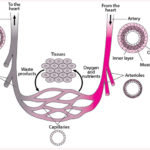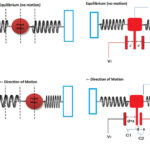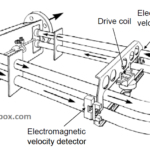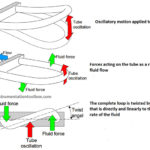The Coriolis effect, a subtle and often-misunderstood principle of physics, has been adapted for highly accurate mass flowmeter instrumentation.
Due to their attractiveness as well as technology advances, Coriolis-based flowmeters are also evolving; also, the effect has been noted in other interesting areas. For example, while the tubes of the meter are usually bent, straight-tube meters are also available (Figure 1).
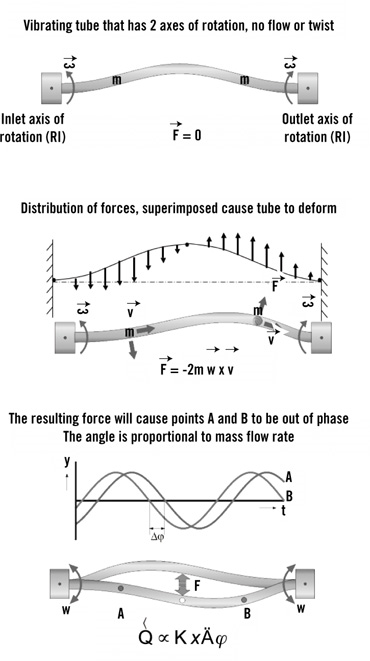
This works because there are two forces proportional to the mass flow rate. The Coriolis effect is generated, as it is in the double-curved tube, through the rotation of the tube about fixed ends. The two sine waves on the inlet and the outlet are shown as Point A and Point B in Figure The inlet side lags the outlet side, which is identical for either straight or curved tubes.
This works because there are two forces proportional to the mass flow rate. The Coriolis effect is generated, as it is in the double-curved tube, through the rotation of the tube about fixed ends. The two sine waves on the inlet and the outlet are shown as Point A and Point B in Figure The inlet side lags the outlet side, which is identical for either straight or curved tubes.
The tube is stimulated to vibrate along the center of the axis, and since the tube is fixed at its ends, the vibration creates two rotating reference frames. The rotation of the inlet side is in the opposite direction of the outlet side, creating the opposing Coriolis forces. This topology requires more extensive calculations and correction factors than the bent-tube version, but that is now practical due to processing and algorithm advances.
Although the basic Coriolis flow meter was designed for industrial applications and had a tube diameter up to about six inches, we’re now living in a nanomaterial and MEMS (microelectromechanical systems) world. Accurately measuring fluid flow when the flow-tube diameters are a millimeter or less is difficult; it gets even more challenging when the tube diameter is on the order of microns, and atomic-scale effects start overwhelming macro-scale effects.
The solution lies in MEMS-based designs. In one case, researchers have built micromachined Coriolis flow meters with silicon microtubes and a capacitive-detection technique to measure tube twist (see ISSSCA Reference). These devices have a mass-flow resolution of 2 μg/sec at a flow of about 1200 mg/sec and could resolve fluid-density resolution to 2 mg/cc.
The Coriolis force is not limited to measuring fluid flow, either. Recall that this force is a gyroscopic effect, and established vendors, applied-research labs, and universities are adapting it to MEMS-based gyros for angular-motion sensing. The structures they are using different and include tuning-fork gyros, oscillating wheels, Foucault pendulums, and wine-glass resonators.
In polyatomic molecules of molecular physics, the motion of a molecule is described by a rigid body rotation and internal vibration of atoms about their equilibrium position. The atoms are in motion relative to the rotating coordinate system of the molecule, as a result of the vibrations of the atoms, The associated Coriolis effect causes the atoms to move in a direction perpendicular to their original oscillations, which leads in turn to a mixing in molecular spectra between the rotational and vibrational levels.
Some insects also exploit the effect, although unlike with gyroscopes, they do so with no relationship to the Earth’s rotation. Some flies and moths use it when flying, as their alters (antennas), oscillate rapidly and are used as vibrational gyroscopes in the case of moths.
Conclusion
The Coriolis effect (or force) is a subtle, interesting physical phenomenon with both atomic-scale and Earth-scale implications. Despite its complexity and years of difficulties in working out its principles, these were eventually resolved. Subsequently, the effect has been used in a variety of practical applications (those insects would agree!). Flow meters based on this principle offer distinct performance advances for true mass measurement as well as accuracy without impeding fluid flow, goals which were sought for many years.
Related EE World Content
- ADI ups ante in high-precision MEMS gyros
- Gyroscopes, Part 2: Optical and MEMS implementations
- Mass Flow Meter Features High Pressure Resistance
- Global Market for Gas Flow Meters, Sensors, & Monitors to Reach $6.4B by 2019
- Watching fluid flow at nanometer scales
- What information does a proximal flow sensor provide?
Other References
- History of Meteorology, “The Coriolis Effect: Four centuries of conflict between common sense and mathematics, Part I: A history to 1885”
- New World Encyclopedia, “Coriolis effect”
- “A Micromachined Coriolis-Force-Based Mass Flowmeter for Direct Mass Flow and Fluid Density Measurement,” 11th International Conference on Solid-State Sensors and Actuators (ICSSSA), 2001
- Analog Devices, “Electromagnetic Flow Meters: Design Considerations and Solutions”
- Bronkhorst High-Tech B.V. “The Importance of Mass Flow Measurement and the Relevance of Coriolis Technology”
- Control Engineering, “Are Coriolis flowmeters a universal technology?”
- Control Engineering, “Tutorial: Coriolis mass flowmeters”
- Chemical Engineering, “Patent granted on microfluidic device design”
- Chemical Engineering Progress “Coriolis: The Direct Approach to Mass Flow Measurement”
- Chemical Processing, “Flow Meter Design: Bend It Like Coriolis”
- Instrumentation and Control, “A history in Coriolis flowmeter technology – and the future…”
- com, “How a Coriolis Mass Flow Meter Works”
- Fierce Electronics, “A Review of Your Flow Sensing Options”
- Fierce Electronics, “An Overview of MEMS Inertial Sensing Technology”
- Flow Measurement and Instrumentation, “Flowmetering of non-Newtonian liquids”
- National Ocean Service, “Currents: The Coriolis Effect”
- University of Liverpool, “Experimental investigation into non-Newtonian fluid flow through gradual contraction geometries”
- Universal Flow Monitors, Inc. “Coriolis Mass Flowmeter Technology”
- Water Online, “3 Dirty Little Secrets About Coriolis Flow Meters”

